 |
| My first OE Heptagenid nymph in four years |
I have not tied one of these nymphs in nearly four years. This along with the OE baetis nymph are staples for early season upstream nymphing. I've caught a lot of fish on this pattern; the weight helps put it in the prime area, near the bottom of the river. I guess it would catch 70% of the trout compared to the baetis. I morn the loss of Spanflex in the smaller sizes, the small and extra small made perfect legs for size 14 and 16 nymphs.
 |
| Peter Hayes' Muskrax |
Finally I could tie the muskrax properly and promptly knocked a few up. The fly is similar to the PhD; the wing is mallard flank, it is tied forward of the hackle but still split into a V. The hackle is fully wound around the shank but the micro fibbet butts are brought underneath the thorax and split the hackle giving the impression of it being clipped. Peter's reason for this is to form a breast plate, making the bottom of thorax smooth like on dun. Another positive off shoot from this is that the fly sits up in water, the split hackle and tail keeps the abdomen off the water.
I liked the effect that the wax body provided. I decided to combine the muskrax and PhD. I used the liquid wax body and forward split wing from the muskrax, (the PhDs wing is split by the hackle, the mallard wing intermingling with the hackle fibres), with the paraloop technique from the PhD. I tied two versions but with only one difference between them; the yellow silk drawn through cobblers wax to give a darker colour. One fly being a pleasant dark olive colour the other a paler yellow olive.
As a rule I would tie the darker olive fly with a darker dun hackle and colour the wing with a grey marker. This in size 16 would be a great imitation for the large dark olive. Tie the yellow version with a lighter dun hackle and leave the wing natural, sizes 18-20 will suit the spurwings and pale wateries.
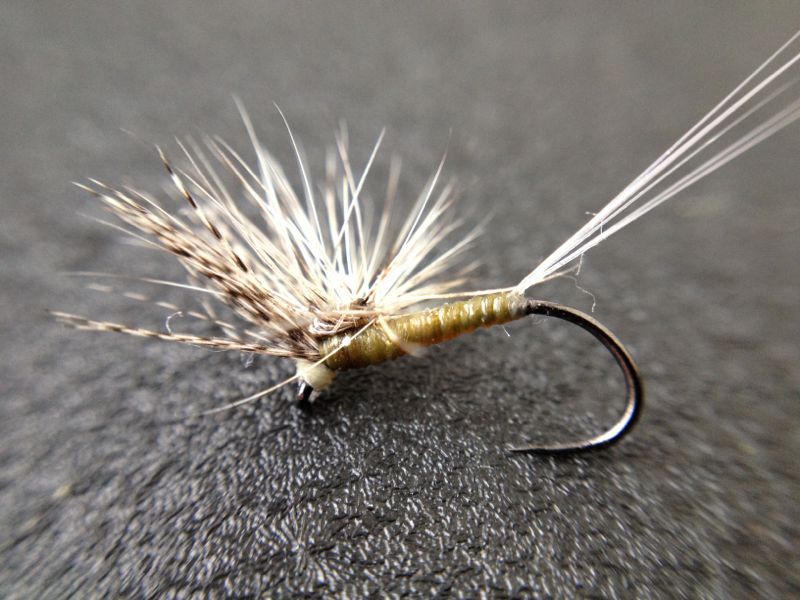 |
| Yellow Pearsalls silk coloured with cobblers wax |
If you feel like tying some of the liquid wax bodied flies up just be aware that it doesn't dry hard, after it has soaked in it will feel slightly tacky but it won't come off or leave a residue on your fingers. Tie the flies first then apply small amounts of the liquid wax using a dubbing needle. Don't put too much on otherwise it can soak in to the wing and hackle resulting in clogged up fibers.
 |
| Yellow Pearsalls silk left natural with liquid wax |
I've also been tying some bead head nymphs with stripped peacock quill.



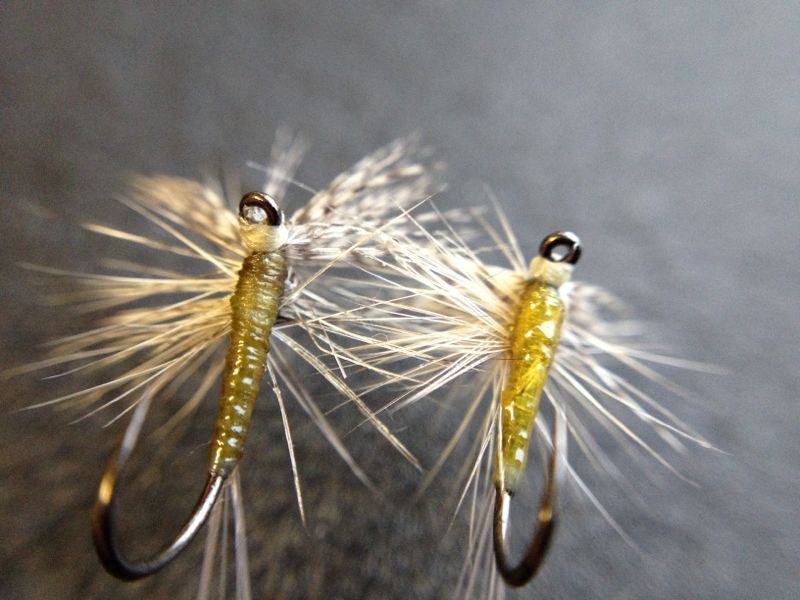
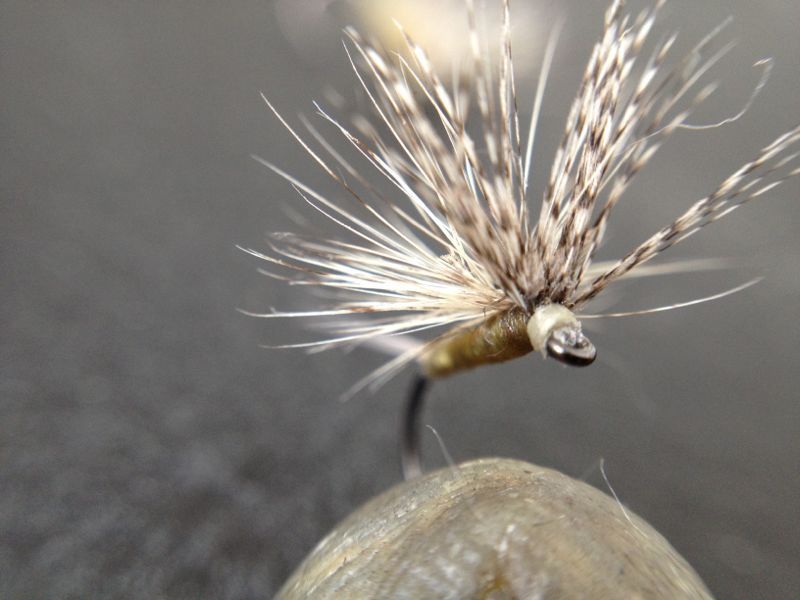
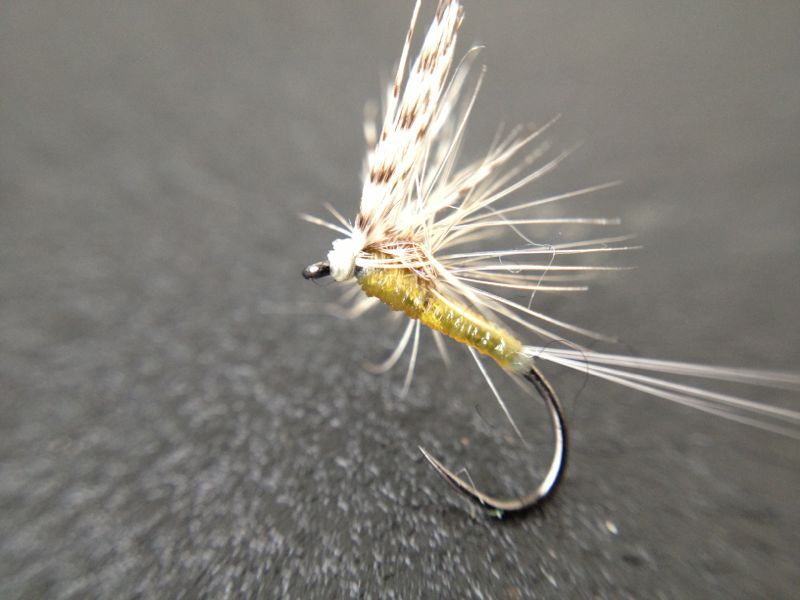

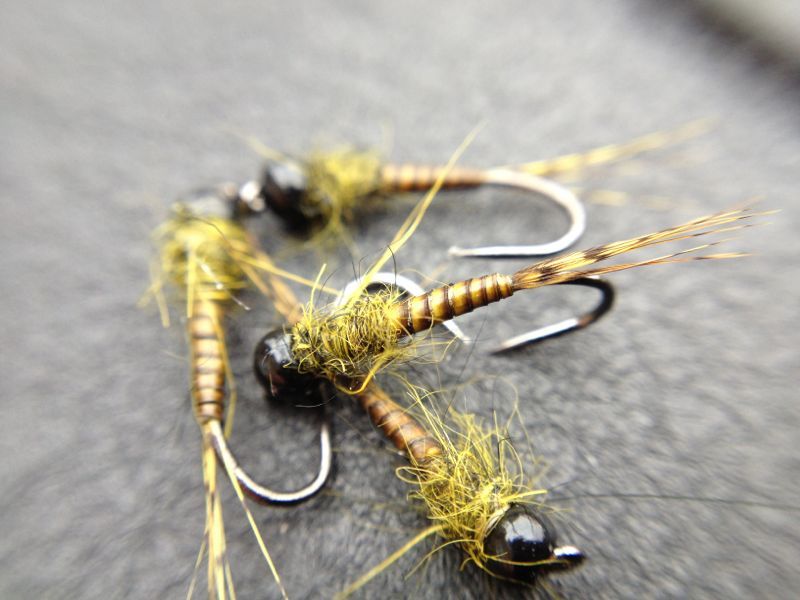
I like those nymphs very tasty looking
ReplyDeleteThanks Andy, they have a great slim baetis like profile and the thorax adds enough suggestiveness to finish the fly off.
Deleteagain excellent flies Ben !!!!,love the quill nymphs ....
ReplyDeleteBruce.
Thanks Bruce
Delete